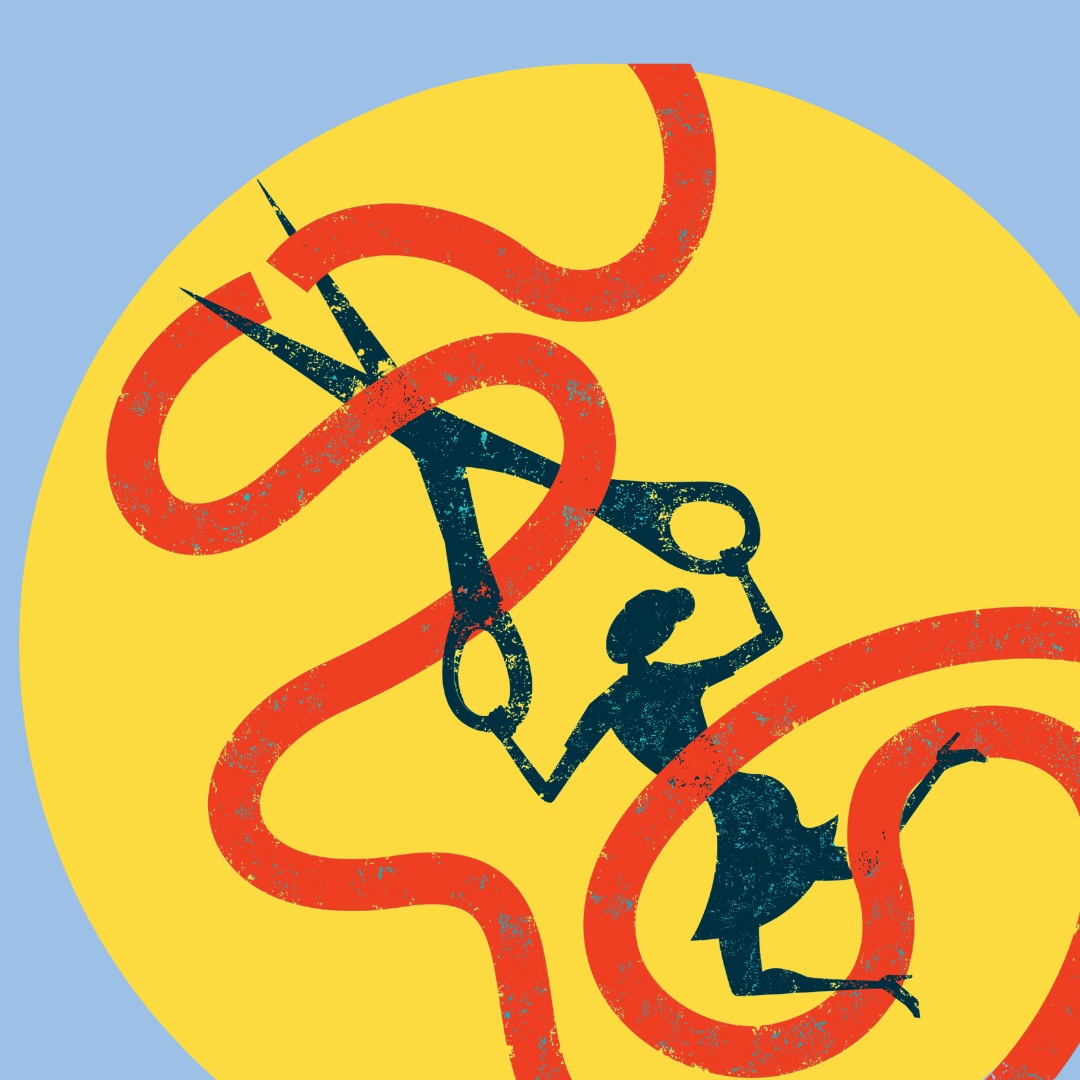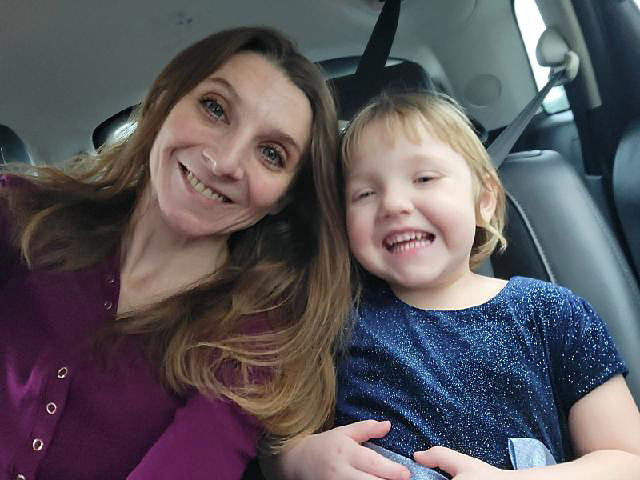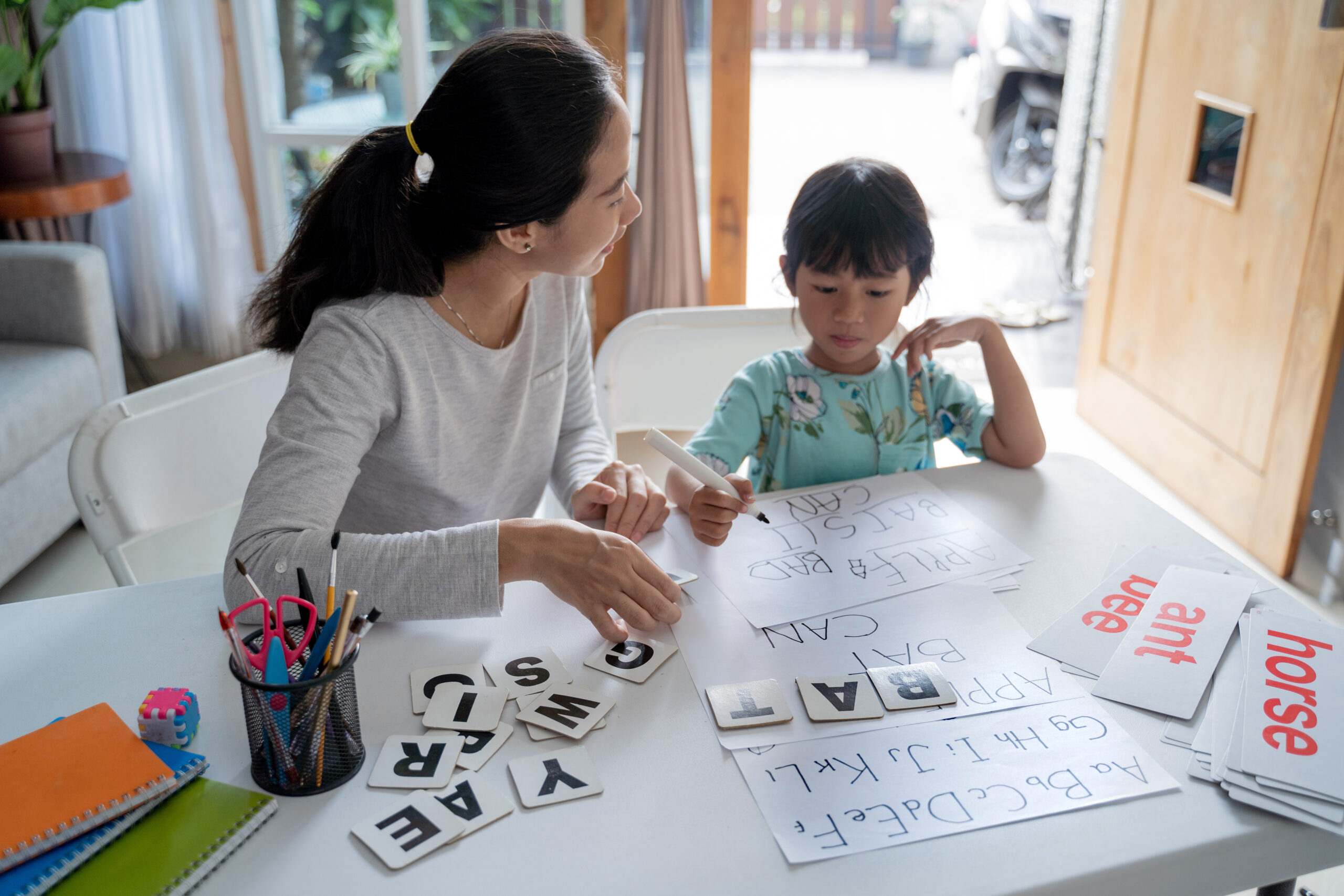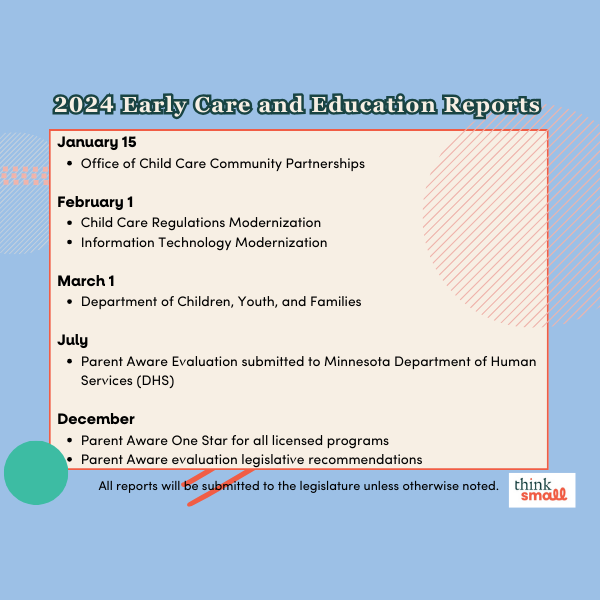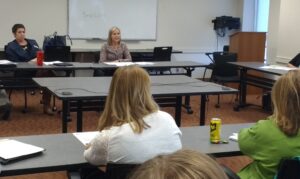 Kelly Monson, Minnesota’s Children’s Cabinet Program Manager, talked about Help Me Grow at May’s policy hour.The purpose of Help Me Grow is to promote healthy development in children prenatal to age eight. The program seeks to support both children and families. It is a cross-agency effort that includes the Minnesota Departments of Health, Education, and Human Services. Currently Help Me Grow provides information on developmental milestones of young children and refers concerned parents and caregivers to local early childhood special education (ECSE) services.Help Me Grow is seeking to expand services in order to better serve families and children. Instead of only referring families to ECSE (which can at times be intimidating and may not be the service families need), the more robust Help Me Grow would include a multi-disciplinary team of people to connect families with a variety of services to meet their needs. By utilizing existing community resources, Help Me Grow could more specifically address the families’ concerns and direct them to the appropriate place.Other states implement Help Me Grow in various ways. Minnesota hopes to build on some of their successes in addition to adding some state-specific ideas. The four major components of an expanded Help Me Grow are 1) Healthcare provider outreach 2) Centralized access to the program 3) Community and family outreach, and 4) Data system. Help Me Grow is currently unable to follow up with families after making referrals. Increasing the capabilities of the program would allow for better tracking. By collecting better data on the process, Help Me Grow hopes to be able to identify both gaps and successes across the state.When planning for the expansion process, four working groups were formed to give recommendations. The recommendations can be found here.This is the second year that Help Me Grow was included in the Governor’s budget. Currently, the Senate is allocating the requested $1 million in state funding for the program. While Help Me Grow presently receives funding through a few different sources, they are somewhat restrictive, and extra dollars are needed to expand. Monson hopes to continue to use multiple, sustainable funding sources for the program in the future, including public-private partnerships.After the explanation of the proposed expansion, several people had questions. One director expressed concern that families do not receive ECSE evaluation services in a timely manner, and services are not sufficient to meet the needs of the families and children. While evaluation can be a slow, districts are required by law to respond within a certain time frame.Many families are fearful of connecting with the school districts because they do not want their child to be labeled for years to come. Expanded Help Me Grow hopes to help mitigate this by offering services beyond ECSE and making sure families are informed about the options.The goal is for the centralized access to Help Me Grow to be housed outside of the state agencies, and some people wanted to know what that would look like in Minnesota. Several states integrate it into their 211 service. However, Monson said it is more likely that there would be a Request for Proposal to organizations in the state who would be interested in implementing the program.For more information about Help Me Grow and the proposed expansion, check out their website or this explanation of the changes.By Marie Huey, Civic Engagement Specialist
Kelly Monson, Minnesota’s Children’s Cabinet Program Manager, talked about Help Me Grow at May’s policy hour.The purpose of Help Me Grow is to promote healthy development in children prenatal to age eight. The program seeks to support both children and families. It is a cross-agency effort that includes the Minnesota Departments of Health, Education, and Human Services. Currently Help Me Grow provides information on developmental milestones of young children and refers concerned parents and caregivers to local early childhood special education (ECSE) services.Help Me Grow is seeking to expand services in order to better serve families and children. Instead of only referring families to ECSE (which can at times be intimidating and may not be the service families need), the more robust Help Me Grow would include a multi-disciplinary team of people to connect families with a variety of services to meet their needs. By utilizing existing community resources, Help Me Grow could more specifically address the families’ concerns and direct them to the appropriate place.Other states implement Help Me Grow in various ways. Minnesota hopes to build on some of their successes in addition to adding some state-specific ideas. The four major components of an expanded Help Me Grow are 1) Healthcare provider outreach 2) Centralized access to the program 3) Community and family outreach, and 4) Data system. Help Me Grow is currently unable to follow up with families after making referrals. Increasing the capabilities of the program would allow for better tracking. By collecting better data on the process, Help Me Grow hopes to be able to identify both gaps and successes across the state.When planning for the expansion process, four working groups were formed to give recommendations. The recommendations can be found here.This is the second year that Help Me Grow was included in the Governor’s budget. Currently, the Senate is allocating the requested $1 million in state funding for the program. While Help Me Grow presently receives funding through a few different sources, they are somewhat restrictive, and extra dollars are needed to expand. Monson hopes to continue to use multiple, sustainable funding sources for the program in the future, including public-private partnerships.After the explanation of the proposed expansion, several people had questions. One director expressed concern that families do not receive ECSE evaluation services in a timely manner, and services are not sufficient to meet the needs of the families and children. While evaluation can be a slow, districts are required by law to respond within a certain time frame.Many families are fearful of connecting with the school districts because they do not want their child to be labeled for years to come. Expanded Help Me Grow hopes to help mitigate this by offering services beyond ECSE and making sure families are informed about the options.The goal is for the centralized access to Help Me Grow to be housed outside of the state agencies, and some people wanted to know what that would look like in Minnesota. Several states integrate it into their 211 service. However, Monson said it is more likely that there would be a Request for Proposal to organizations in the state who would be interested in implementing the program.For more information about Help Me Grow and the proposed expansion, check out their website or this explanation of the changes.By Marie Huey, Civic Engagement Specialist

